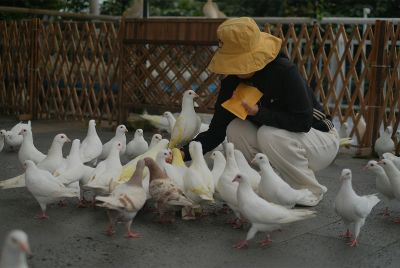Rhinoplasty in Turkey & Breast Surgery in Turkey: A Practical 2025 Guide
Turkey has become one of the world's most in-demand destinations for cosmetic surgery

Turkey has earned a reputation as a destination where careful surgical planning meets attentive aftercare. Between modern hospital infrastructure, experienced surgeons, and travel-friendly packages, patients find it easier to combine medical treatment with a short city break—especially in Istanbul.
Why Patients Choose Turkey for Aesthetic Surgery
- Depth of experience: High case volumes allow teams to refine technique and workflow, which can translate into smoother operations and predictable recovery paths.
- Modern facilities: Many centers operate within hospital settings, with on-site imaging, anesthesia teams, and postoperative monitoring.
- End-to-end support: Airport transfers, hotel coordination, translation assistance, and structured aftercare simplify logistics for international patients.
- Value: Package pricing often bundles surgeon fees, operating theatre, implants (when relevant), medications, and follow-ups—making comparisons more transparent.
Spotlight on Esteworld (Dr. Burak Tuncer)

Esteworld in Istanbul is frequently shortlisted by patients who want the feel of a hospital environment combined with individualised planning. Under the medical leadership of Dr Burak Tuncer, the team prioritises clear patient communication, careful pre-operative assessment, and consistency of technique from consultation to follow-up.
What many patients appreciate:
- Doctor-led planning: A structured consultation evaluates nasal anatomy or breast measurements alongside your aesthetic goals.
- Technique fit, not trends: Whether it's open vs. closed rhinoplasty, preservation concepts, or implant choice and pocket plane in breast surgery, decisions are matched to your tissue characteristics.
- International care pathway: Coordinators help with scheduling, transport, accommodation proximity, and postoperative check-ins (including remote photo reviews).
- Aftercare you'll actually follow: Clear instructions for washing, swelling control, incision/scar care, and activity resumption, plus scheduled touchpoints.
Part I: Rhinoplasty in Turkey
Who Is a Candidate?
You may benefit from rhinoplasty in Turkey if you want to refine the bridge or tip, narrow the base, correct a deviated septum, improve breathing, or harmonise proportions with your chin and midface.
Techniques in Plain Language
- Open vs. Closed Rhinoplasty:
- Open uses a tiny columellar incision for full visualisation—often preferred for complex or revision cases and precise tip work.
- Closed hides incisions inside the nostrils—useful for selected reshaping without extensive tip reconstruction.
- Preservation Concepts: Some cases maintain more of the native dorsum, adjusting support structures while keeping natural lines and shadow play.
- Functional Work (Septoplasty, Turbinates): Breathing concerns can be addressed during the same surgery, balancing aesthetics and airflow.
The Patient Journey: From Consultation to Recovery
- Virtual or in-person consult: Discuss goals, review photos, and map out a plan. Avoid 'wish noses'—aim for harmony with your unique features.
- Pre-op testing & planning: Routine bloodwork and anesthesia clearance; sometimes imaging for complex function issues.
- Surgery day: Most rhinoplasties use general anesthesia. Surgery length varies with complexity.
- Immediate recovery: A splint often stays for ~1 week; internal supports may be used when needed. Expect swelling and bruising under the eyes initially.
- Weeks 1–4: Social downtime is usually 7–10 days. Bruising fades; swelling transitions from 'obvious' to 'subtle'.
- Months 3–12: Tip definition improves as thicker-skin cases de-puff. Final refinement can take a year or more.
Results You Can Expect
Good rhinoplasty respects structure and function.
Part II: Breast Surgery in Turkey
Breast surgery in Turkey spans several procedures. The best outcomes come from choosing the right technique for your anatomy and long-term goals.
Breast Augmentation (Implants and/or Fat Transfer)
- Implants: Modern silicone implants come in different shapes (round, anatomical), projections, and textures. Choice depends on chest width, tissue thickness, and desired upper-pole fullness.
- Placement: Subglandular (above muscle) can suit thicker tissue; submuscular/dual-plane can camouflage edges in thinner patients.
- Incisions: Inframammary fold (under breast), periareolar (around the areola), or transaxillary (in the armpit)—each has trade-offs for scar visibility and control.
Breast Reduction
Reduces weight and volume while lifting and reshaping. Many patients report improved posture and comfort, easier exercise, and clothing fit.
The Patient Journey: What to Expect
- Consultation & Sizing: Measurements, tissue quality, and lifestyle guide implant selection or lift pattern. Expect a frank talk about proportions and long-term stability.
- Pre-op: Standard labs, mammogram/ultrasound when indicated by age/history, and medication review.
- Surgery day: General anesthesia is standard. Surgical time varies: lifts/reductions often take longer than straightforward augmentation.
- Early recovery: Support bra immediately; drains are used selectively. You'll receive detailed instructions for incision care and showering.
Implants: Safety, Monitoring, and Revisions
Implants are not 'lifetime devices'. They can last many years, but you should plan for periodic checks and understand that revision surgery may be needed down the line—for size changes, capsule issues, or normal wear.
Safety First: What to Ask Any Clinic
- Who performs key steps? Confirm the surgeon's hands-on role from incision to closure (and, in rhinoplasty, the fine details of tip work and structural support).
- Anesthesia & accreditation: Is a board-certified anesthesiologist present? Is the facility properly licenced?
- Complication plans: Understand monitoring, medication protocols, emergency pathways, and revision philosophy.
- Before-and-after relevance: Request cases that mirror your anatomy and goals, not just the most dramatic transformations.
Travel & Timing: Making Istanbul Work for You
- Stay length: Plan 3–7 days in Istanbul depending on procedure complexity and your surgeon's preferences.
- Hotel location: Choose a hotel close to the clinic to reduce transit time after surgery.
- Flight strategy: Use a neck pillow, wear loose layers, and carry paperwork and meds in your cabin bag.
How Esteworld Fits Into This Picture
With Dr Burak Tuncer leading the medical programme at Esteworld, patients typically experience a clear pathway: structured consultation, tailored operative plan, precise technique, and pragmatic aftercare.
Cost Considerations (and How to Compare Quotes)
Prices vary with case complexity, operating time, implant brand (for augmentation), and hospitalisation needs. Instead of chasing the lowest number, compare:
- Surgeon's involvement and experience with your scenario
- Facility and anesthesia setup
- What's included: implants, garments, medications, hotel, transfers
An apples-to-applescomparison usually narrows the gap between 'budget' and 'premium' offers and helps you spot genuine value.
Quick Checklist Before You Book
- Two or three video consultations with different surgeons
- A written plan covering technique, scar patterns or nasal approach, and realistic outcomes
- Clear timeline for recovery and safe flight date
- Itemised quote and warranty details (if implants are used)
- Pre-op testing list and medication instructions
Frequently Asked Questions
1) Is it safe to have rhinoplasty or breast surgery in Turkey? Yes—provided you choose a properly accredited facility with a qualified surgical and anesthesia team
2) How long should I stay after rhinoplasty? Most patients remain in Istanbul for about a week to allow splint removal and an early check-up.
3) How long should I stay after breast augmentation, lift, or reduction? Plan at least 4–6 days for an in-person wound check and garment fitting.
4) Will rhinoplasty improve my breathing? If functional issues (deviated septum, valve collapse, turbinate hypertrophy) are addressed during surgery, breathing can improve.
5) What is recovery like after rhinoplasty? Expect swelling and some bruising for the first week. Many people feel 'socially presentable' after 10–14 days, with subtle refinement continuing for months, especially at the tip.
6) What is recovery like after breast surgery? You'll wear a support bra and limit upper-body strain initially.
7) Can I combine rhinoplasty and breast surgery in the same trip? Some patients do, but combined procedures increase operative time and recovery demands.
8) How do I choose implant size and profile? Measurements, soft-tissue coverage, and lifestyle guide selection more than 'cup size goals'. A fit that suits your frame usually ages better and feels more comfortable.
9) Will breast implants affect breastfeeding or cancer screening? Many people breastfeed successfully after augmentation, but it isn't guaranteed.
10) What scars should I expect after a breast lift or reduction? Scar patterns reflect the degree of lift required: periareolar for minimal, vertical ('lollipop') for moderate, and anchor for substantial reshaping
© Copyright IBTimes 2025. All rights reserved.





















